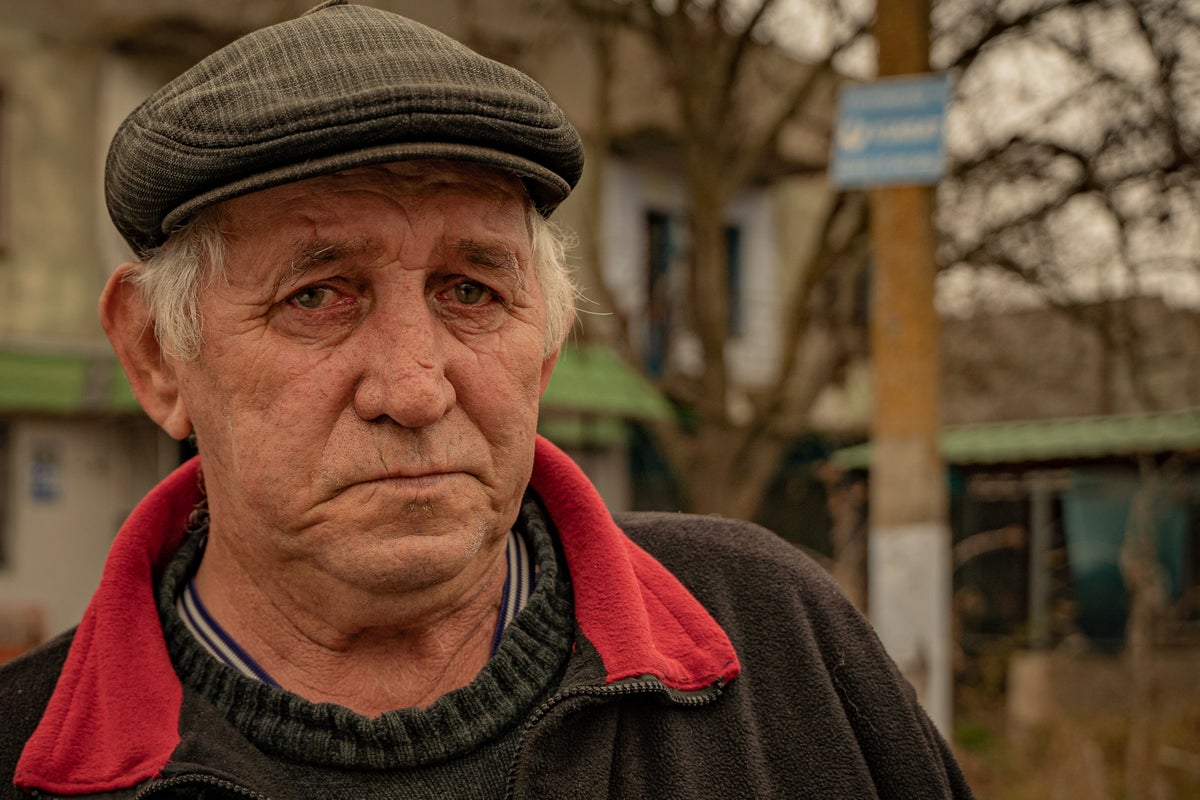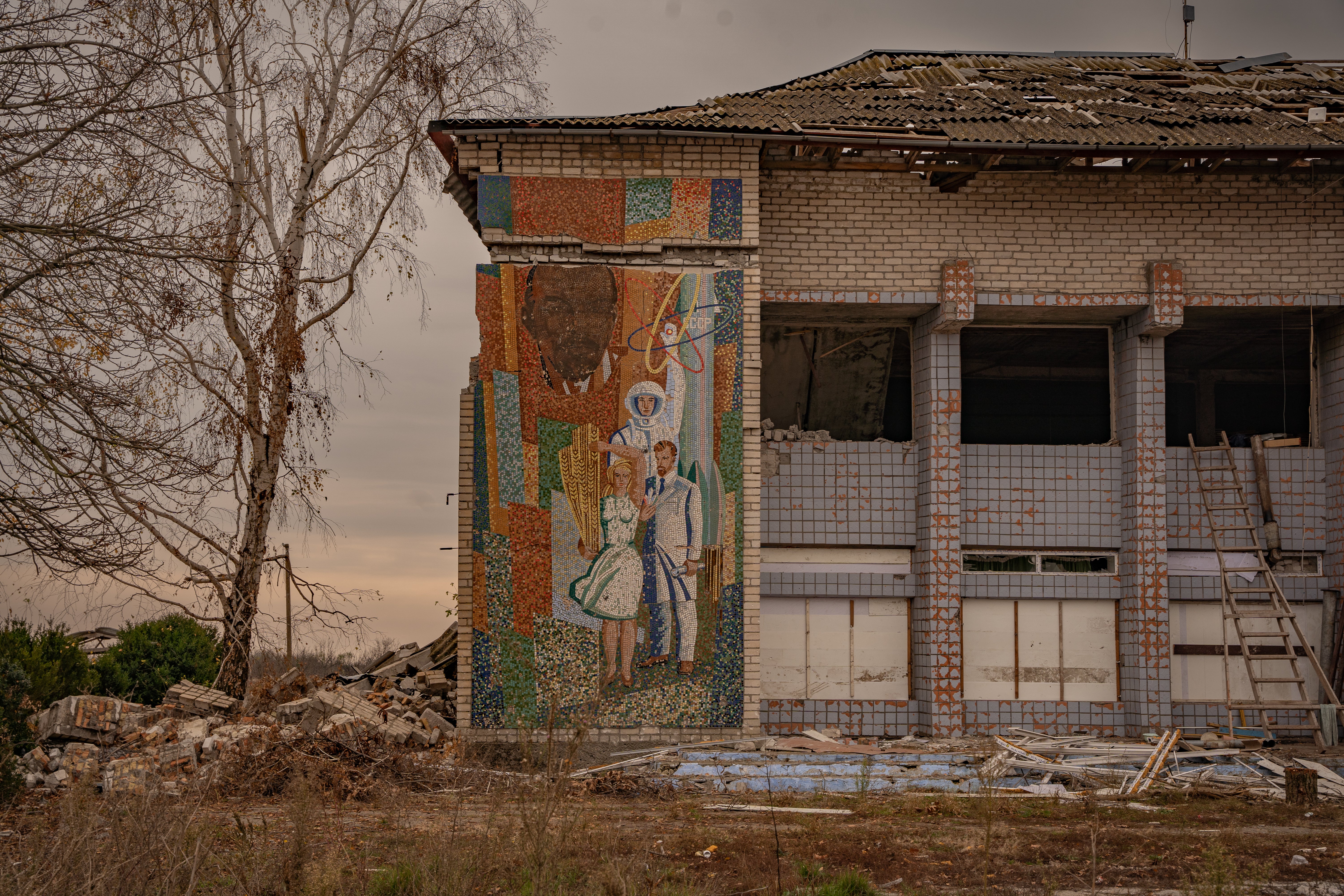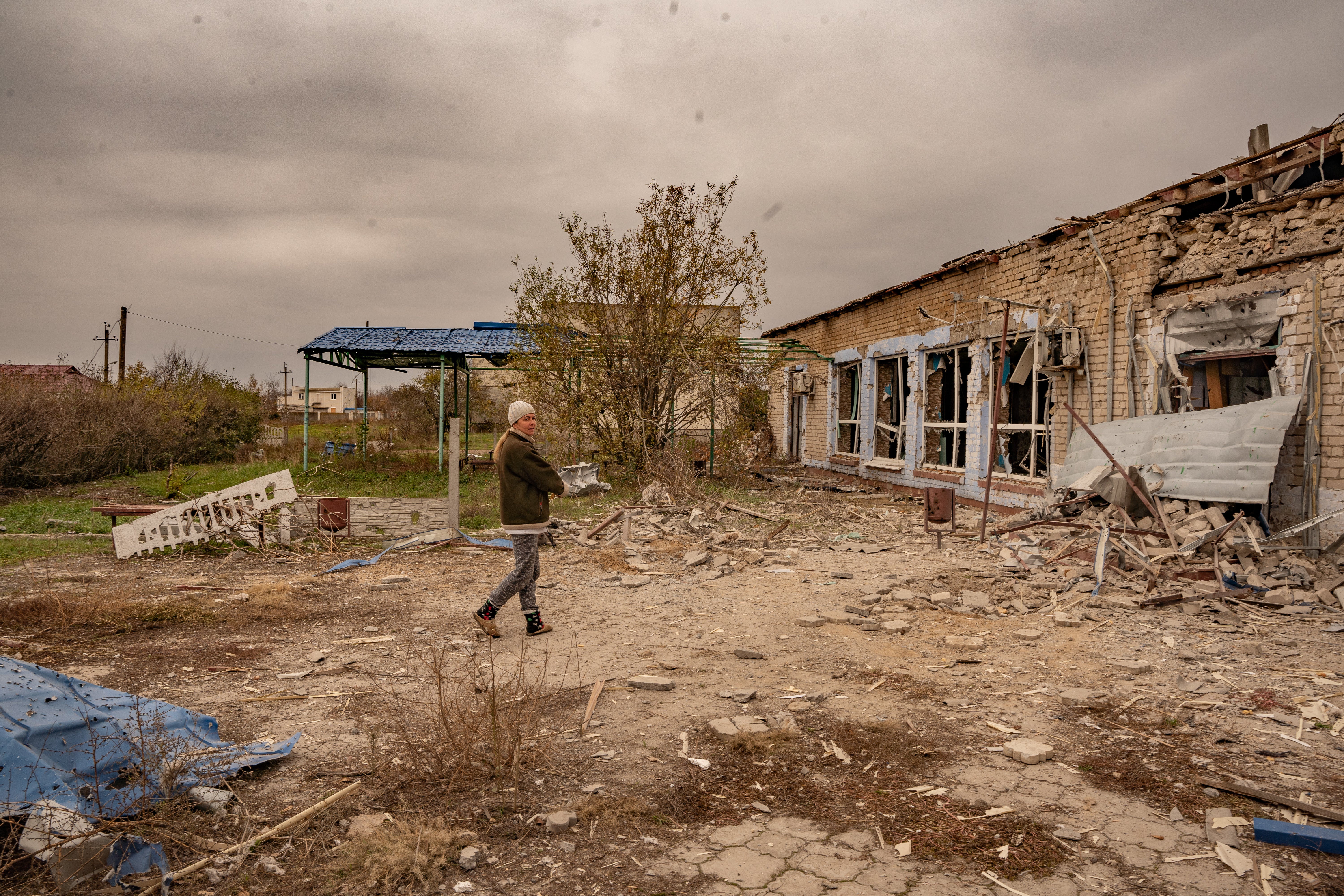
Bent double with grief, Serhiy, 66, picks through the remains of his destroyed village that just two days ago was zero point in the front line of Russia’s invasion of southern Ukraine.
He is on his first trip back to Kobzartsi, in the Mykolaiv region, since March after being critically injured in a round of shelling. His wife had just died in a heart attack brought on by the ferocious round of bombardment which nearly killed him.
The village next door, Snihurivka, had been occupied by Russian forces for eight months, morphing into an important logistics hub and an anchor for the Russian defensive lines there.
And so Ukraine’s artillery brigades had been stationed around Kobzarsi, and until last week had been locked in a ferocious and grinding artillery battle with Russian soldiers who had flattened swathes of the village.
Now as Moscow announced the complete withdrawal from all their positions west of the Dnipro river including Mykolaiv, and as Ukrainian soldiers were filmed being greeted by adoring crowds in the capital of neighbouring Kherson, Ukrainian brigades had liberated Snihurika and are now pushing south opening up more towns.
It meant it was finally safe enough to go home to Kobzartsi. But home to what?
“We have just checked. My house is completely destroyed,” Serhiy, a retired mechanic says, pushing down the tears, as his son, who is a soldier, supports him.
“We came to salvage what we could from what remains.”
“All that I have left is to pay my respects at my wife’s grave,” he tails off with a desolate shrug.

After a ferocious Ukraine counteroffensive that cut off Russia’s supply lines, this week Moscow ordered a complete withdrawal from the west bank of the Dnipro river, swathes of territory that stretched through Kherson and neighbouring Mykolaiv and had been captured early on in the war.
Russia’s defence ministry said in its retreat it had withdrawn more than 30,000 soldiers across the Dnipro River, which cuts the region in half, without losing a soldier. But Ukrainians described a chaotic pullback, with Russian troops ditching their uniforms or even drowning trying to escape.
The retreat deals an embarrassing blow to Russian president Vladimir Putin, who had annexed Kherson and three other regions in September vowing they would remain Russian “forever”. He has so far remained silent on the development.
The jewel in this prize had been the regional capital Kherson city, which on Friday appeared to be in Ukrainian forces’ hands. Jubilant videos were shared showing special forces soldiers being greeted and hugged by Ukrainian residents who shouted “Glory to the armed forces” and waved Ukrainian flags.
Ukraine is yet to claim full control of the city and its commanders have been cautious warning that thousands of Russian soldiers may still be hiding in the Kherson and Mykolaiv regions. Cities, towns and villages are also likely heavily mined.
Russia also still controls 70 per cent of the remaining part of the Kherson region. Kremlin-aligned media reported on Saturday that Henichesk, a town around 170km southeast of Kherson city has been declared the new “capital” of Russian-occupied territory.
Ukrainian president Volodymyr Zelensky maintained Friday was a “historic day” and that “life is returning”. Troops were on the outskirts of Kherson city, he said, special forces were in the centre.
And for those around the recently liberated areas, it meant the start of a tentative return home and the beginning of rebuilding their lives devastated by war.
“For nine months everyone who evacuated has been calling me trying to find out if their homes were destroyed or not,” says Natasha, 45, a local grocer and one of the 60 or so people who stayed in Korbatzi for the entire duration of the fighting. It had a pre-war population of around 1,000 residents.

She remained to keep an eye on the elderly who could not evacuate and the farmlands, 3,000 hectares of which she said had been scorched by Russia’s bombardment. She walks us through the village, gouged out by eight months of incoming Russian fire. All the farming infrastructure has been destroyed, the fields are completely burned and they lost 2,000 pigs, many of which were killed in the shelling.
“We had hoped it would only be a few shells, but now you can see everything is destroyed. We tried to rebuild after every round of Russian shelling but it would just get flattened again” she says in tears.
“We might get some breathing pace now with the withdrawal for people to come home here and Snihurkiva.”
“But so far I have had to turn people away, everywhere is destroyed or mined.”
And this will be the reality for so many residents of these areas taking stock after nine bloody months.
Liberation is just the start of a long journey of painful recovery. There are also concerns for villages along the west bank of Dnipro river that The Independent has visited. Residents there fear that they will become the focal point of Russia’s fury after its withdrawal. Defence experts say the Russians have fortified their positions on the eastern banks ready for a ferocious bombardment ahead.
For Serhiy, there is nothing left to destroy.
“I came back today just to try to assess the damage and pick up what I could,” he says, hopelessly.
“I am old, I don’t have much of my life left. How can I rebuild it all now?”





!["[T]he First and Fifth Amendments Require ICE to Provide Information About the Whereabouts of a Detained Person"](https://images.inkl.com/s3/publisher/cover/212/reason-cover.png?w=600)

